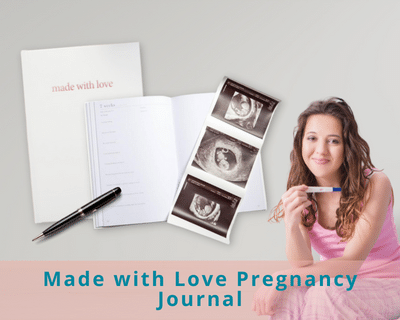By
 Your baby’s development
Your baby’s development
Pregnancy really begins when an ovum is fertilised by one of the 500 million sperm that approach it. Only twelve hours after the initial fusion of ovum and sperm the first cell division occurs. By the fourth day following fertilisation the tiny group of cells leave the fallopian tube and enter the mother’s uterus, where they implant. Three weeks after fertilisation, or at just five weeks of pregnancy, as women realise their periods are late, the baby at barely 2mm long has a beating heart. One more week and the basic human design can be seen.
The First 12 Weeks of Pregnancy
The first 10 to 12 weeks of pregnancy are a crucial period in the baby’s development. All the major internal and external body structures form during this time and exposure to certain medications, viruses, alcohol and drugs can lead to malformations. At 10 weeks of pregnancy the baby looks remarkably human with arms, legs, fingers and toes. The head of the baby will almost be half the size of the entire baby and the eyes will be open. Shortly the eyelids will fuse and not reopen for several months. All the baby’s organs are now in place but there is still a great deal left to happen.
By the end of the first trimester of pregnancy (14 weeks) the risk of malformations and miscarriages diminishes significantly. The baby will weigh around 45gms and be around 8cm long. They float comfortably in a pool of warm liquor. The baby can already hiccup and move around, flexing its little limbs and exploring its new world. The mother’s uterus can be felt just above her pubic bone. The sex of the baby will be distinguishable and its face will have a very distinct human profile and a well-defined neck. Even early fingernail development can be seen. The baby has already begun to swallow.
Changes in your body
Around three quarters of pregnant women experience nausea and about one third vomiting during the first trimester of pregnancy. This eases around 14 weeks and is generally relieved by 22 weeks of pregnancy. This nausea is probably a protective mechanism, turning us off many potentially harmful things to the baby, such as alcohol and cigarettes.
Some women experience extreme tiredness that can suddenly come upon them. Dizziness is also quite common and women may find they faint easily or just can’t stand for long periods. Breast tenderness can be experienced early on, even before the first period is missed. The veins on the breasts may appear blue and prominent. Women often feel they need to pass urine more frequently in the first trimester as the uterus competes with the bladder for room. This tends to ease as the uterus grows past the pubic bone.
Emotionally this can be a time of joy or/and anxiety depending on whether the pregnancy was planned or not, the level of support available and of course how sick you feel. Women often feel that it is after the first trimester, when the risk of miscarriage declines significantly, that they begin to feel more emotionally connected to their baby.
Appointments and tests
Once you know you are pregnant it is a good idea to visit your general practitioner. They will ask you questions about your health and family history. They will also send you to have a series of blood tests to check for complications that could potentially impact on your health and that of your baby (see First Trimester Guide for Pregnant Women below). If you are over 35 or have a family history of a genetic condition then you should talk to a genetic counsellor early in the pregnancy. Tests such as the Nuchal Translucency ultrasound for Down syndrome and Chorionic Villus Sampling (CVS) are done during this trimester if you choose to have these tests.
If you are not already taking folic acid then you should begin now in order to prevent neural tube defects such as Spina Bifida. It is recommended that women take a low dose of folic acid (0.5mg) every day when planning to get pregnant and for the first three months of pregnancy. This is not a substitute for a well balanced diet.
Your general practitioner will also ask about the type of care you want (midwife, general practitioner or obstetrician) and which hospital you will be going to, if you are having your baby in a hospital. This is in order for them to write you a referral. The earlier you book in for your pregnancy care the less likely you will be disappointed. For example, if you want have your baby in a birth centre you will need to book early, as they are very popular.
First Trimester Guide for Pregnant Women
| Baby’s development |
| Heart beats (5 weeks) |
| Looks remarkably human with arms, legs, fingers and toes (10 weeks) |
| Hiccup, move around, swallow, sex distinguishable (14 weeks) |
| Changes in your body |
| Nausea and vomiting |
| Frequency of urination |
| Tiredness |
| Tender breasts |
| Some weight gain |
| May be dizzy at times |
| Appointments and tests |
| If not taking folic acid before pregnancy take now |
| See general practitioner and get referral for care |
| PAP smear if needed |
| Genetic counselling if over 35 years or have a significant family history |
| Nuchal translucency screening ultrasound if needed (11.5-13.5 weeks) |
| CVS if needed (11-12 weeks) |
| Blood tests for: blood group; anaemia; hepatitis B virus; rubella immunity and syphilis |
| Other possible blood tests for: Hepatitis C; HIV; Thalassaemia, iron studies, vitamin D |
| Urine screen for bacteria |
Further Reading
- The First Trimester – Weeks 1 to 14
- The Second Trimester – Weeks 15 to 28
- The Third Trimester– Weeks 29 to birth




Recent Comments